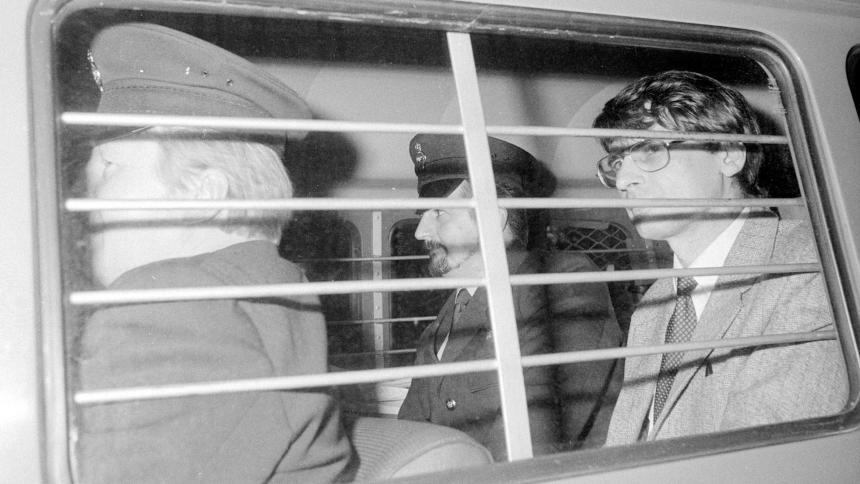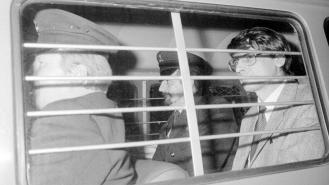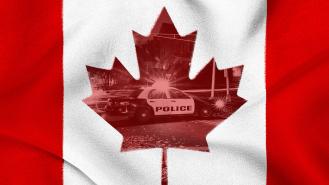
How homophobia allowed these serial killers to carry on killing
Over the decades, people have been preyed upon by murderers time and time again without the authorities identifying the patterns and taking swift action. The reason: homophobia.
Here’s how deeply ingrained prejudices, biases and assumptions allowed four notorious serial killers to operate for far too long.
1. Stephen Port
Serial killers are often noted for the arrogant audacity of their crimes, but Stephen Port took things to a brazen extreme. Between 2014 and 2015, he dumped the bodies of his victims – young men he met on gay dating apps – in glaringly close proximity to each other. Indeed, two of the men were dumped in the same graveyard and discovered by the same passer-by.
Despite the red flags and the heartfelt warnings of family members, as well as the queer community who were concerned a serial killer might be in their midst, police assumed the deaths were either down to accidental drug overdoses or suicide until after the fourth victim was murdered.
The relaxed, incurious attitude of detectives horrified loved ones, with the mother of victim Anthony Walgate saying, ‘If four young women had been found so close together, there would have been uproar.’ Meanwhile, the boyfriend of another victim, Daniel Whitworth, was denied permission to see Daniel’s purported suicide note (which Port had in fact written), and later told the press he wasn’t treated as a next of kin because they ‘were a gay, unmarried couple’.
As human rights campaigner Peter Tatchell put it, ‘Every gay person who expressed concerns about the deaths was ignored, dismissed and treated with contempt. That’s institutional homophobia.’
2. Jeffrey Dahmer
The grisly, cannibalistic killer Jeffrey Dahmer murdered at least 17 males in Ohio and Wisconsin between 1978 and 1991, but his bloody spree might have ended far sooner if police hadn’t been blinded by their preconceptions about gay men.
One of Dahmer’s victims, 14-year-old Konerak Sinthasomphone, managed to escape his apartment and was seen staggering down the street, naked, bleeding and disorientated from a brain injury. A trio of local women found him and called the police, but Dahmer arrived on the scene and claimed Konerak was his legal-aged boyfriend who was simply drunk.
Police officers completely bought the story, impatiently telling the women to ‘butt out’ of the situation and escorting Dahmer and Konerak back to the killer’s apartment. Despite the stink of death pervading the place, the police abandoned Konerak there, dismissing the whole debacle as ‘a gay thing’. Reporting back to the police dispatcher, the officers cracked jokes, laughed about returning the ‘intoxicated Asian naked male’ to his ‘sober boyfriend’, and talked about needing to get ‘deloused’ after dealing with the gay men.
Had the officers not been so keen to extract themselves from the scene, and actually properly investigated Dahmer’s apartment, he wouldn’t have been left free to kill Konerak and four further victims.

3. Dennis Nilsen
Often regarded as the British equivalent of Jeffrey Dahmer, Dennis Nilsen murdered at least 12 men and boys between 1978 and 1983. Many of his victims were runaways, homeless, and involved with sex work – in other words, marginalised by society, the kind of people who wouldn’t readily be ‘missed’.
The prevailing attitude at the time towards queer people, especially those struggling on the fringes of society, created a context where a killer like Nilsen could satisfy his gruesome urges without the press or the police taking an active interest. Speaking in a documentary on Nilsen, Lee Mason – a Londoner who was involved in sex work in the period when Nilsen was carrying out his gruesome killings – highlighted the attitude of the authorities at the time.
‘We are trash, we’re meat,’ he recalled. ‘They just didn’t want to know. So what happened with [Nilsen] is that in North London, all those young men died.’
The UK’s restrictive legislation on the rights of gay men may have also played a part, given that an early victim of Nilsen’s – a 19-year-old student named Andrew Ho – declined to press charges despite being attacked by the serial killer. This was partly because he was under the age of consent for gay sex, which was 21 at the time. If Ho had felt more comfortable about exposing Nilsen, numerous lives would have been saved.
4. Bruce McArthur
A Canadian landscape gardener in his mid-60s who also worked as a shopping centre Santa Claus, Bruce McArthur cut an unlikely figure when he first appeared in court on multiple murder charges. He eventually pleaded guilty to eight killings carried out throughout the 2010s, the majority of his targets being middle-aged men of Middle Eastern and Asian ethnicities.
The conservative cultural and religious backgrounds of many of his victims meant they couldn’t be open about having sex with other men. Some led double lives which made them vulnerable since their loved ones wouldn’t have known who they were seeing. After McArthur was unmasked, serious questions were also raised about the investigation, and why detectives seemed so reluctant to accept the disappearances of the men were connected and that a serial killer was possibly targeting gay and bisexual men in Toronto.
Community organisers have been vocal about feeling sidelined and ignored by the authorities as men were going missing, and an extensive official inquiry concluded that the investigation was hampered by ‘misconceptions or stereotypical ideas’ about queer people and culture.
Haran Vijayanathan, executive director of the Alliance for South Asian AIDS Prevention (ASAAP) summed up the general feeling of those in the LGBTQ+ community when he told local media, ‘We clearly think there is racism, homophobia and classism that played a part in how this investigation was conducted.'







